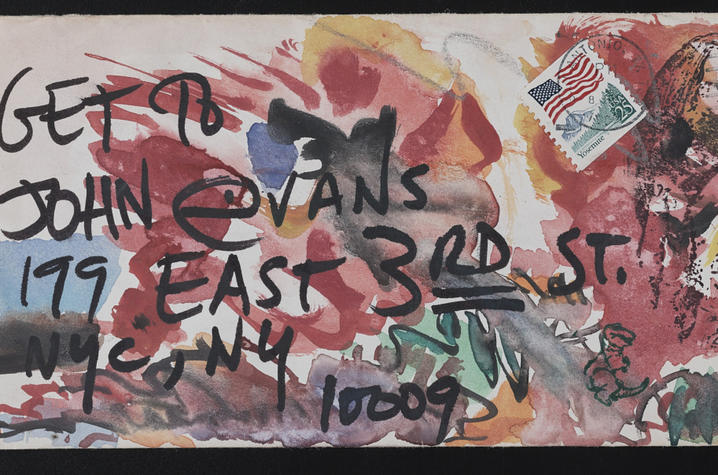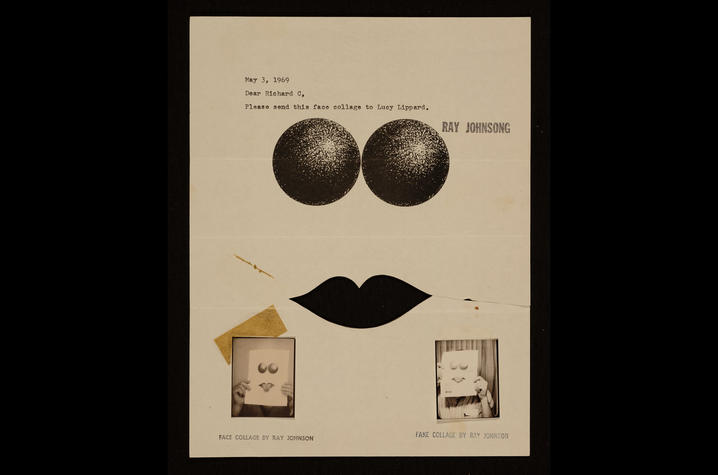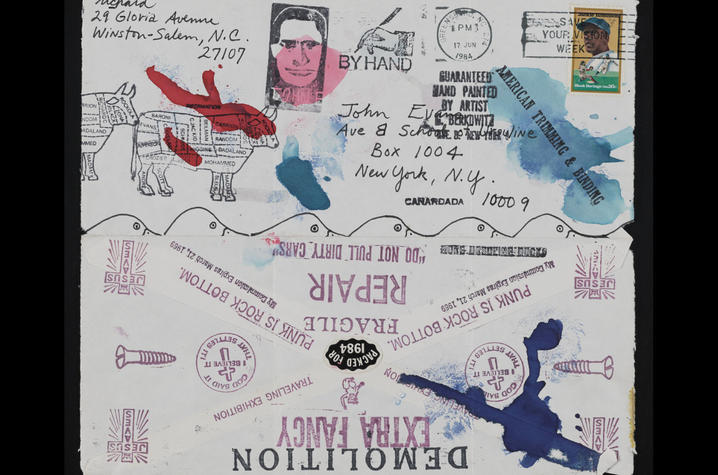UK Art Historian Curates Mail Art Exhibit for the Archives of American Art, Smithsonian Institution
LEXINGTON, Ky. (Aug. 8, 2018) — Miriam Kienle, an assistant professor of contemporary art history at the University of Kentucky School of Art and Visual Studies, is the guest curator behind the Archives of American Art, Smithsonian Institution, (the Archives) new exhibition documenting the international mail art movement. "Pushing the Envelope: Mail Art from the Archives of American Art," which opens Aug. 10, will feature postcards, letters and packages that tested the limits of what could be posted.
Beginning in the 1960s, mail art (alternatively called “correspondence art” or “postal art”) emerged as a form of artistic practice in which an international network of participants used the mail to make art and share it with others. Mail artists circumvented traditional, elite modes of display and distribution — such as museums and commercial galleries — in favor of the more accessible space of the modern postal system.
The exhibition surveys the diversity and depth of mail art-making internationally — including postal art pioneers and lesser-known practitioners — and reveals the interconnected nature of the Archives’ holdings. Among the artists featured in the exhibition are Carl Andre, John Baldessari, Anna Banana, Jay DeFeo, John Held Jr., General Idea, Ry Nikonova, Elizabeth Pearl, Ray Johnson, Carol Schneck and Richard Tuttle.
“Together, these documents bring to light how artists from around the world looked to the postal system as an alternative means of producing, distributing and receiving art,” said Kate Haw, director of the Archives of American Art. “Each document tells a compelling, multi-layered story about this aspect of art history, artists’ lives and pressing issues of their times.”
Utilizing the commonness and connectiveness of postal networks, practitioners of mail art questioned the inequities of the global art market and national regulations regarding culture and communications, creatively sidestepping the art market and, in many instances, eluding government censors. Examining how mail art has worked across divergent cultural circumstances — from McCarthy-era America, to Soviet Poland, to Chile under the dictatorship of Augusto Pinochet — the exhibition invites viewers to consider issues regarding circulation, collaboration, and community among artists in and among specific national contexts.
Kienle developed “Pushing the Envelope: Mail Art from the Archives of American Art” in conjunction with UK students in her special topics seminar on the international mail art movement. The students offered feedback on works selected for the show and even wrote some of the exhibition labels.
“Collaborating with students seemed to be in the spirit of mail art, but it also offered an excellent opportunity for students to work in a hands-on manner with archival materials and learn about the unique discoveries that can be made when you dig in to primary sources,” Kienle said. “And because the students knew that their labels, if outstanding, might be included in the exhibition, they strove toward excellence in a way that they don’t always when simply turning in an assignment for a grade.”
“Pushing the Envelope: Mail Art from the Archives of American Art” is on display through Jan. 4, 2019, in the Lawrence A. Fleischman Gallery in the Donald W. Reynolds Center for American Art and Portraiture in Washington, D.C. The exhibition will travel to UK in January 2019.
Miriam Kienle
Miriam Kienle specializes in modern and contemporary art, with an emphasis on collage, new media, participatory art practices, digital and public humanities, and the history and theory of modern communication. Her current book project, tentatively titled “Community at a Distance: Ray Johnson’s Correspondence Art Network, 1955-75,” analyzes Johnson’s role as the initiator of the international mail art movement through the lenses of postal history, network theory, and theories of gender and sexuality. For her research on Johnson, Kienle received funding from American Council of Learned Societies, the Association of Historians of American Art, Illinois Program for Research in the Humanities, and UK's Office of the Vice President for Research among others. Her writings have appeared in such publications as Art Papers, Media-N, Ninth Letter, Number Inc. and NY Arts Magazine.
Additionally, curatorial practice is central to Kienle's research and teaching. She has curated many national and international exhibitions at venues such as Burlington City Arts (Burlington, Vermont); Dorsky Gallery Curatorial Programs (New York, New York); Krannert Art Museum (Champaign, Illinois); and Museum of São Roque (Lisbon).
Archives of American Art
Founded in 1954, the Archives of American Art fosters advanced research through the accumulation and dissemination of primary sources, unequaled in historical depth and breadth, that document more than 200 years of the nation’s artists and art communities. The Archives provides access to these materials through its exhibitions and publications, including the Archives of American Art Journal. An international leader in the digitizing of archival collections, the Archives also makes nearly 2.5 million digital images freely available online.
UK School of Art and Visual Studies
The UK School of Art and Visual Studies, at the UK College of Fine Arts, is an accredited member of the National Association of Schools of Art and Design and offers undergraduate and graduate degrees in the fields of art studio, art history and visual studies, art education, and digital media and design.







